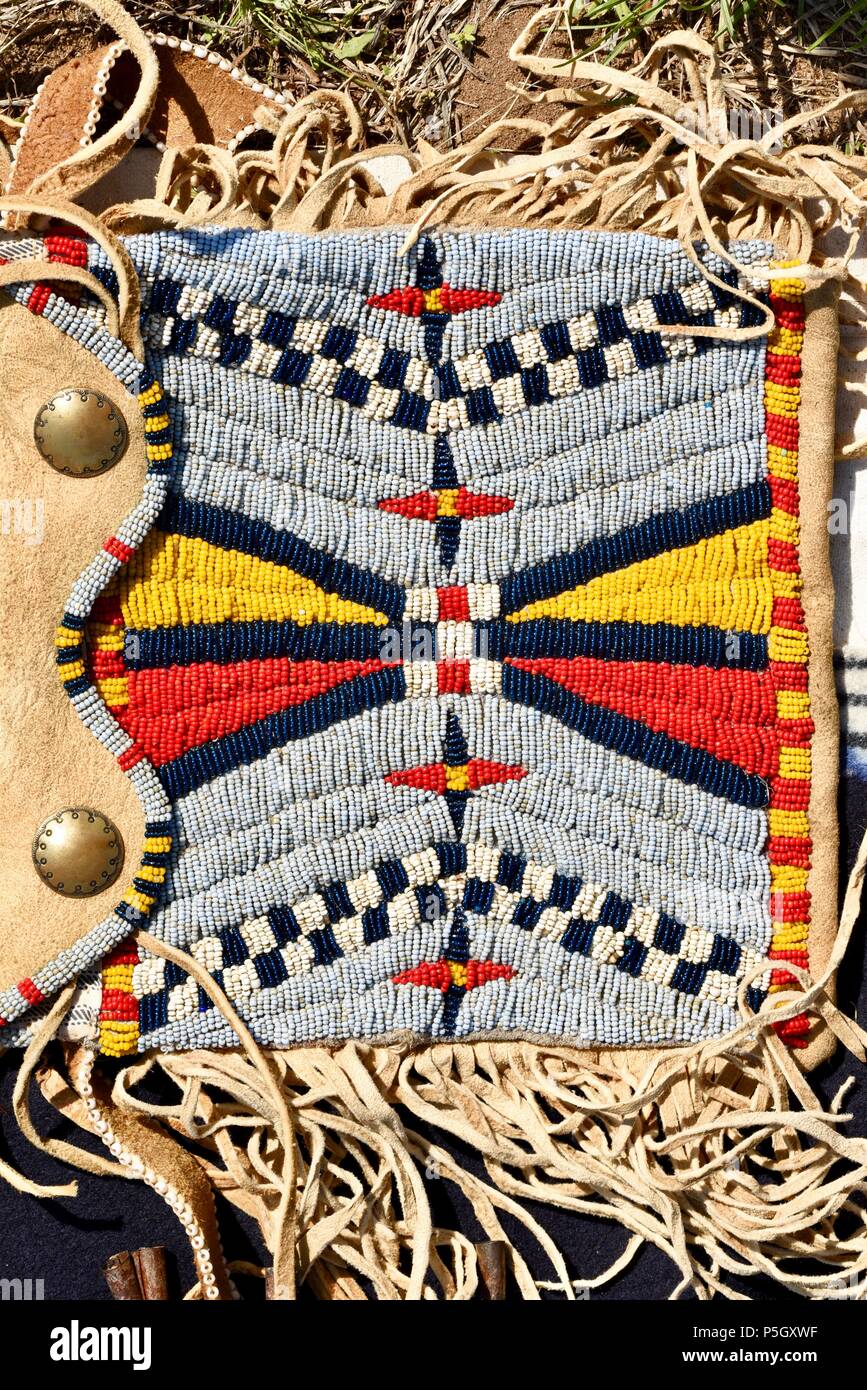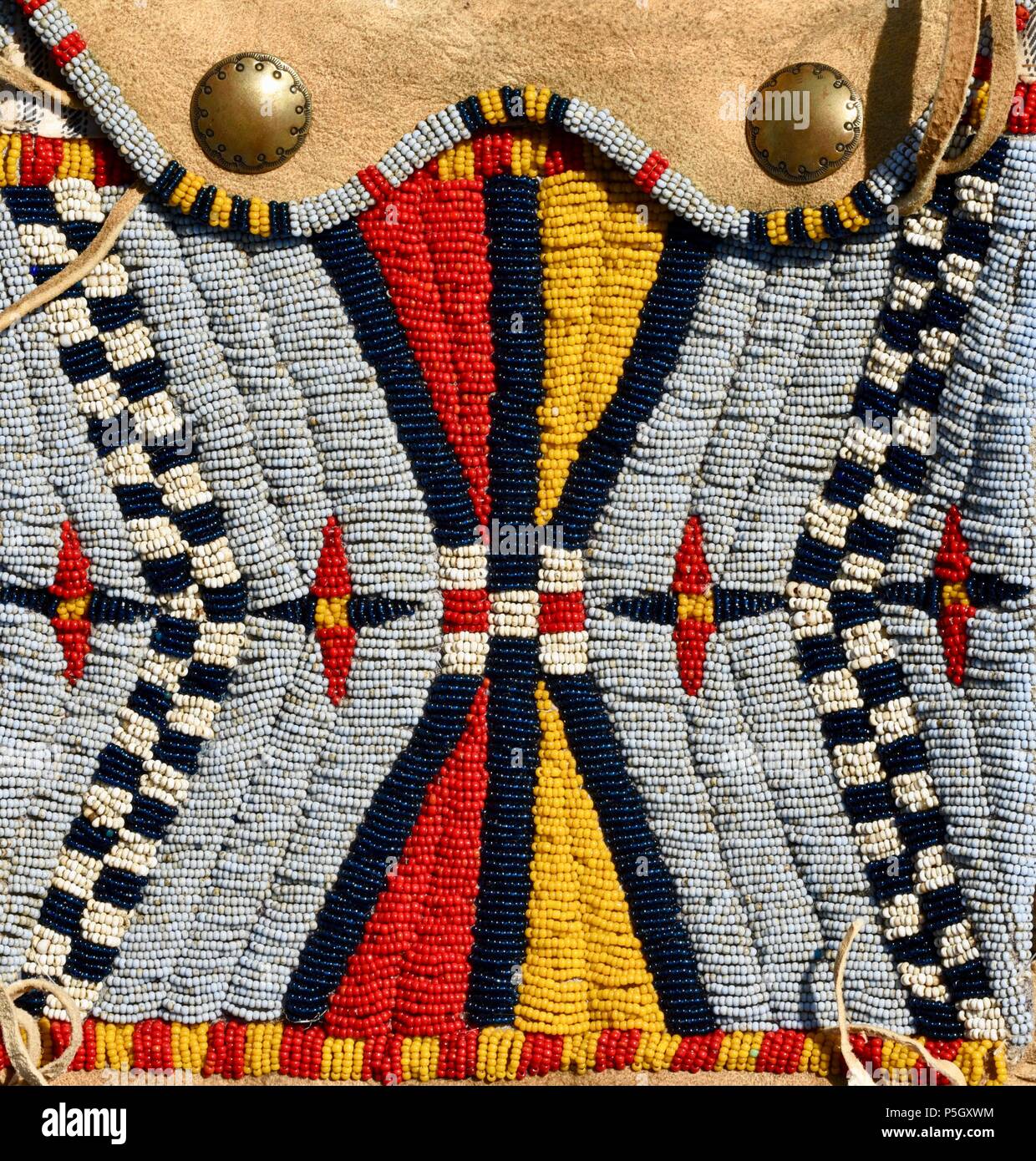
Authentic Native American Beadwork: A Deep Dive into History, Culture, and Ethical Display
Native American beadwork is far more than mere decoration; it is a vibrant, living art form deeply interwoven with the history, spirituality, and identity of Indigenous peoples across North America. From its ancient origins using natural materials to the transformative introduction of glass beads and its dynamic contemporary expressions, beadwork serves as a powerful testament to creativity, resilience, and cultural continuity. Understanding its rich tapestry requires an exploration of its historical evolution, diverse regional styles, profound cultural significance, and the ethical considerations surrounding its display and appreciation.
Pre-Contact Origins: The Foundation of Adornment
Long before the arrival of European traders, Indigenous peoples adorned themselves and their belongings with intricate designs crafted from naturally occurring materials. This pre-contact period laid the essential groundwork for what would evolve into glass beadwork. The most prominent and sophisticated of these early art forms was quillwork, primarily utilizing the hollow quills of the North American porcupine.
Artists, predominantly women, meticulously collected, sorted, and flattened quills. These quills were then dyed using natural pigments extracted from plants, berries, roots, and minerals, resulting in a rich palette of colors. The prepared quills were then sewn, wrapped, plaited, or woven onto softened hide, bark, or fabric. Techniques varied widely, from intricate geometric patterns created by flat stitching to three-dimensional effects achieved through wrapping and braiding around strands of sinew or hair. Quillwork was applied to clothing (moccasins, shirts, dresses), bags, knife sheaths, pipe stems, and ceremonial objects, imbuing each piece with cultural meaning and artistic skill.

Beyond quillwork, other natural materials formed the basis of early adornment. Shells, particularly dentalium from the Pacific Coast and conch shells from the Gulf, were prized for their beauty and used for jewelry, currency (like wampum in the Northeast, made from quahog and whelk shells, which also served diplomatic and historical recording purposes), and decorative elements. Seeds, bone, teeth (from elk, bear, or other animals), claws, polished stones, and even copper (mined in the Great Lakes region) were skillfully incorporated into garments, regalia, and personal accessories, each carrying specific symbolic weight and reflecting the wearer’s status, achievements, or spiritual connections. These early forms of adornment were not simply aesthetic; they were integral to identity, ceremony, and the recording of oral traditions.
The Arrival of Glass Beads: A Transformative Era
The late 15th and early 16th centuries marked a pivotal shift with the arrival of European traders, who introduced glass beads as a major commodity. Initially, these beads were a novel and exotic trade item, quickly integrated into existing Indigenous material cultures. Early trade beads, often larger and sometimes referred to as "pony beads" (due to their transport by pack pony), came in a limited range of colors. Over time, smaller "seed beads" (typically 10/0, 11/0, or 12/0 in size) became more prevalent, largely sourced from Venice (Italy) and later from Bohemia (modern-day Czech Republic).
The availability of glass beads offered several advantages: they were uniform in size and color, durable, and relatively easy to work with compared to the laborious process of preparing quills. Indigenous artists quickly recognized the potential of these new materials, adapting their traditional design aesthetics and techniques to the vibrant new medium. While glass beads largely eclipsed quillwork in widespread use for many everyday items, quillwork never disappeared entirely and continues to be practiced as a distinct and highly valued art form. The introduction of glass beads did not signify a loss of tradition but rather a dynamic evolution and expansion of Indigenous artistic expression.
Regional Styles and Evolving Techniques
The vast geographical and cultural diversity of Native North America resulted in a rich tapestry of regional beadwork styles, each reflecting local aesthetics, materials, and cultural narratives.
1. Plains Beadwork: Characterized by bold geometric designs, often employing the Lazy Stitch technique. In this method, short rows of beads (typically 5-10) are strung on a thread and then tacked down to a hide or cloth surface, creating a distinctive ridged texture. Early Plains designs were highly abstract, featuring rectangles, triangles, and stepped patterns, often in limited color palettes (white, dark blue, red, green). Later, especially after interaction with Métis and Woodlands peoples, floral motifs became more common. Plains beadwork adorned moccasins, pipe bags, vests, dresses, cradleboards, and horse regalia, serving as markers of identity, tribal affiliation, and individual achievements.
2. Woodlands/Great Lakes Beadwork: Known for its curvilinear, often naturalistic floral and vine motifs. The Appliqué or Overlay Stitch is characteristic here, where beads are strung in short segments and sewn down individually or in pairs to outline and fill intricate designs directly onto cloth or velvet. This technique allows for greater fluidity and detail than the Lazy Stitch. Common items include elaborate bandolier bags, moccasins, cuffs, pouches, and ceremonial items, often incorporating a wider range of colors and complex compositions that evoke the lush natural environment.
3. Plateau Beadwork: Often a blend of Plains and Northwest Coast influences, featuring both geometric and realistic floral designs. Artists frequently employed fine seed beads and a combination of stitches, often on cloth, creating highly detailed and colorful pieces.

4. Southwestern Beadwork: While traditional Southwestern adornment heavily features turquoise, silver, and shell, glass beads were incorporated for specific items, particularly for ceremonial regalia and dance outfits among various Pueblo, Navajo, and Apache communities. Peyote Stitch (see below) is also prevalent.
5. Other Techniques:
- Peyote Stitch (Gourd Stitch): An off-loom technique where beads are built up row by row in a brick-like pattern, often used for tubular items like fan handles, rattles, and contemporary jewelry. It creates a flexible, textured surface.
- Loom Weaving: Used for creating belts, sashes, and bands. Beads are strung on warp threads and woven in with weft threads, resulting in a flat, tightly woven fabric of beads.
Cultural Significance and Meaning
Native American beadwork transcends its aesthetic appeal to embody profound cultural significance. It is a visual language that tells stories, records histories, and expresses spiritual beliefs.
- Identity and Affiliation: Designs, colors, and patterns often signify tribal affiliation, clan membership, and individual identity. A specific motif might be unique to a family or a particular ceremonial society.
- Status and Achievement: Elaborate beadwork on regalia could indicate the wearer’s status within the community, their accomplishments (e.g., in battle or hunting), or their role in ceremonies.
- Spirituality and Worldview: Many designs are not merely decorative but hold spiritual meaning, representing elements of the natural world (animals, plants, celestial bodies) or embodying protective powers. Colors themselves often carry symbolic weight (e.g., red for life/blood, blue for sky/water, white for purity/spirit).
- Gender Roles: Historically, beadwork (and quillwork) was predominantly a women’s art form, passed down through generations. It was a vital skill, demonstrating patience, precision, and artistic vision. While women continue to be central to beadwork, men also engage in the art, particularly with techniques like Peyote Stitch.
- Resilience and Adaptation: The continuity of beadwork through centuries of immense cultural disruption—forced relocation, suppression of languages and traditions—is a powerful testament to Indigenous resilience. It demonstrates the ability to adapt new materials while maintaining core cultural values and artistic integrity.
Contemporary Beadwork: Innovation and Preservation
Native American beadwork is a living art form that continues to evolve. Contemporary artists draw upon ancestral techniques and motifs while fearlessly experimenting with new materials, colors, and forms. They create traditional regalia, jewelry, sculptures, and conceptual art pieces that address modern issues, celebrate cultural pride, and push the boundaries of the medium. This contemporary expression ensures the art form remains relevant, vibrant, and a vital part of cultural revitalization efforts across Indigenous communities.
Ethical Display and Interpretation
The display and interpretation of authentic Native American beadwork, particularly in museum settings or public exhibitions, demand a deep commitment to ethical practices, respect, and accurate representation.
-
Context is Paramount: Every piece of beadwork tells a story. Ethical display requires providing comprehensive context: the specific Indigenous nation or community that created it, the approximate date of creation, the artist (if known), the materials used, the techniques employed, and, most crucially, its original purpose and cultural significance. Without this context, a piece risks being reduced to a mere "curiosity" rather than a meaningful cultural artifact.
-
Respectful Presentation: Beadwork should be presented with dignity, acknowledging it as a product of living cultures. Labels should use respectful, up-to-date terminology, avoiding outdated or derogatory language. Where possible, Indigenous voices should be prioritized in interpretation, perhaps through oral histories, artist statements, or collaborative exhibition design.
-
Preservation: Due to the organic and delicate nature of many materials (hide, sinew, thread, beads), careful preservation is essential. This includes maintaining stable environmental conditions (temperature, humidity, light levels) to prevent deterioration. Proper mounting and handling techniques are critical to ensure the long-term survival of these irreplaceable cultural treasures.
-
Avoiding Appropriation: A significant ethical concern in contemporary society is cultural appropriation. Displaying Native American beadwork should educate audiences on the difference between appreciation and appropriation. This means emphasizing that beadwork designs, motifs, and styles are often culturally specific and not "free for all" to replicate or commercialize without the consent and involvement of the originating communities. Supporting authentic Indigenous artists and businesses is crucial.
-
Consultation and Collaboration: Best practices in museums and galleries involve direct consultation and collaboration with Indigenous communities whose cultural heritage is being displayed. This ensures accuracy, addresses concerns about sensitive materials, and empowers communities to share their stories on their own terms. It also opens avenues for discussions on repatriation (the return of cultural items to their communities of origin) where appropriate.
-
Challenging Stereotypes: Ethical display actively works to dismantle harmful stereotypes about Native Americans as a monolithic or vanished people. By showcasing the diversity, complexity, and ongoing vitality of Indigenous beadwork traditions, exhibitions can contribute to a more nuanced and accurate understanding of Native American cultures.
In conclusion, authentic Native American beadwork stands as a magnificent and enduring art form. Its history is a journey from natural materials to glass, marked by innovation and adaptation. Its patterns and forms are not just beautiful; they are imbued with generations of cultural knowledge, spiritual connection, and personal identity. To truly appreciate this art is to understand its deep roots, respect its cultural significance, and engage with its ongoing narrative in an informed and ethical manner, recognizing it as a testament to the enduring creativity and spirit of Indigenous peoples.


